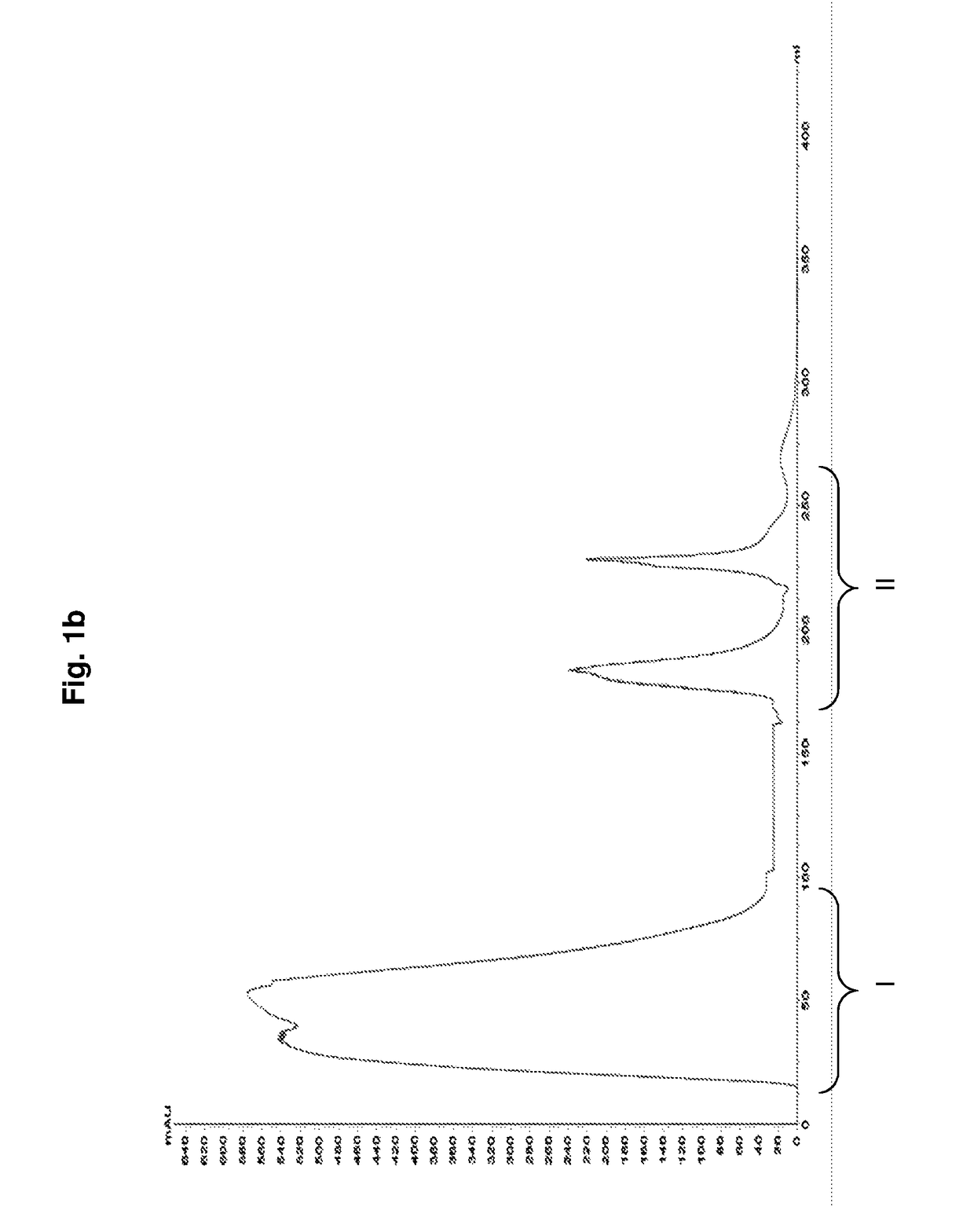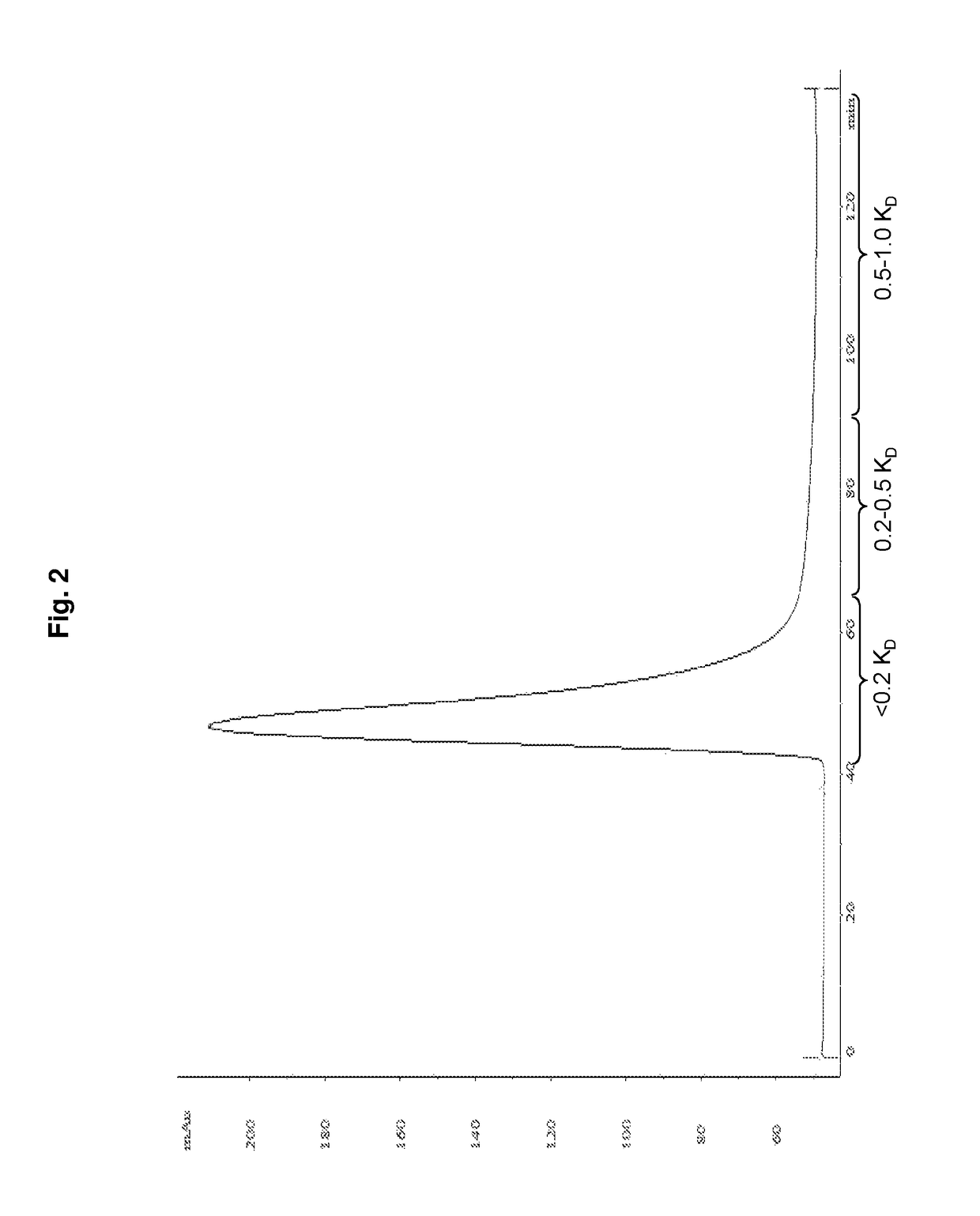Purification of polysaccharide protein conjugates
a polysaccharide and protein technology, applied in the field of purification of polysaccharide protein conjugates, can solve the problems of poor immune response to such antigens in children under two years and elderly persons, polysaccharide protein conjugates, and high undesirable contaminants, so as to shorten the process time, effectively remove contaminants, and fast and efficient removal of impurities or contaminants
- Summary
- Abstract
- Description
- Claims
- Application Information
AI Technical Summary
Benefits of technology
Problems solved by technology
Method used
Image
Examples
example 1
Purification of Hib Conjugate Using Gel Filtration Chromatography (3.0 L Scale)
[0073]The chromatography column (BPG, GE Healthcare) packed with Sepharose CL-2B (GE Healthcare) is equilibrated with equilibration buffer (10 mM Phosphate buffer containing 0.2 M NaCl). 3000 mL of crude Hib conjugate (Hib polysaccharide conjugated to tetanus toxoid) is loaded onto the pre equilibrated column. The crude conjugate gets fractionated (Fraction-1 to Fraction-4) based upon distribution coefficient (Kd), from which the desired conjugate (Fraction-2) is collected in a flowthrough. Rest of the fractions (Fraction-1, Fraction-2 and Fraction-3) contains contaminants (FIG. 1a).
example 2a
Purification of Hib Conjugate Using Mixed Mode Chromatography (0.08 L Scale)
[0074]80 mL of crude Hib conjugate i.e., Hib polysaccharide conjugated to tetanus toxoid (concentration 10 mg / mL, pH 5.8 and conductivity 20 mS / cm) is diluted 10 times with equilibration buffer (10 mM Sodium phosphate, pH 5.8 and conductivity 2 mS / cm) and concentrated to approximately five times its volume using 1000 kDa cassette (Millipore Biomax). The conjugate is continuously diafiltered (using 30 kDa membrane) with equilibration buffer for about 20 times and concentrated to its initial volume.
[0075]The mixed mode matrix (Capto™ Core 700 matrix, GE Healthcare) packed in BPG column (GE Healthcare) is equilibrated with equilibration buffer and the conjugate is loaded at the rate of 10 cm / h. The unbound conjugate is collected. A wash is given to the column using the equilibration buffer to collect the remaining conjugate non-specifically adhering to the matrix. The conjugate collected is diluted using phosph...
example 2b
Purification of Hib Conjugate Using Mixed Mode Chromatography (3.0 L Scale)
[0076]3000 mL of crude Hib conjugate i.e., Hib polysaccharide conjugated to tetanus toxoid (concentration 10 mg / mL, pH 5.8 and conductivity 20 mS / cm) is diluted 10 times with equilibration buffer (10 mM Sodium phosphate, pH 5.8 and conductivity 2 mS / cm) and concentrated to approximately 3 times its volume using 1000 kDa cassette (Millipore Biomax). The conjugate is continuously diafiltered (using 30 kDa membrane) with equilibration buffer for about 25 times and concentrated to its initial volume.
[0077]The mixed mode matrix (Capto™ Core 700 matrix, GE Healthcare) packed in Axichrom column (GE Healthcare) is equilibrated with equilibration buffer and the conjugate is loaded at the rate of 60 cm / h. The unbound conjugate is collected. A wash is given to the column using the equilibration buffer to collect the remaining conjugate non-specifically adhering to the matrix. The conjugate is diluted using phosphate buf...
PUM
| Property | Measurement | Unit |
|---|---|---|
| molecular weight | aaaaa | aaaaa |
| molecular weight | aaaaa | aaaaa |
| conductivity | aaaaa | aaaaa |
Abstract
Description
Claims
Application Information
 Login to View More
Login to View More - R&D
- Intellectual Property
- Life Sciences
- Materials
- Tech Scout
- Unparalleled Data Quality
- Higher Quality Content
- 60% Fewer Hallucinations
Browse by: Latest US Patents, China's latest patents, Technical Efficacy Thesaurus, Application Domain, Technology Topic, Popular Technical Reports.
© 2025 PatSnap. All rights reserved.Legal|Privacy policy|Modern Slavery Act Transparency Statement|Sitemap|About US| Contact US: help@patsnap.com



